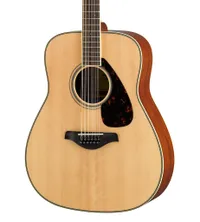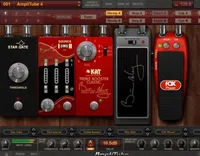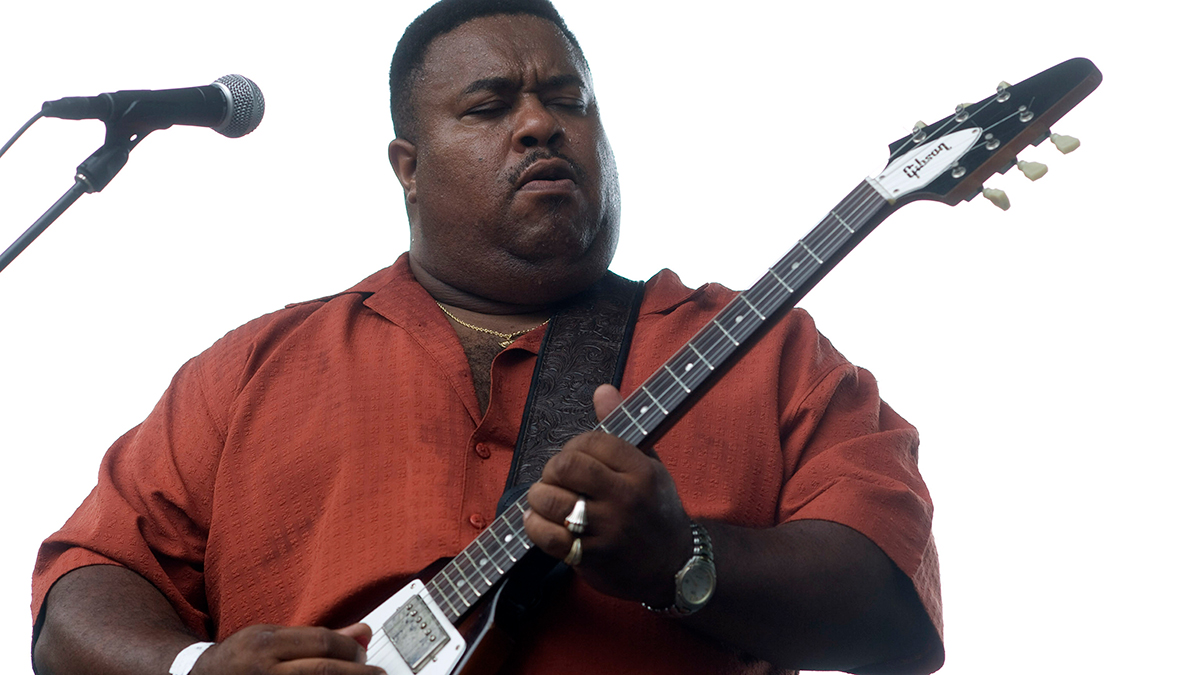Brian May’s guitar gear: how to sound like the iconic Queen guitarist
From the Red Special to an arsenal of effects, here's how to sound like the operatic rock legend, including the ultimate tone hack...
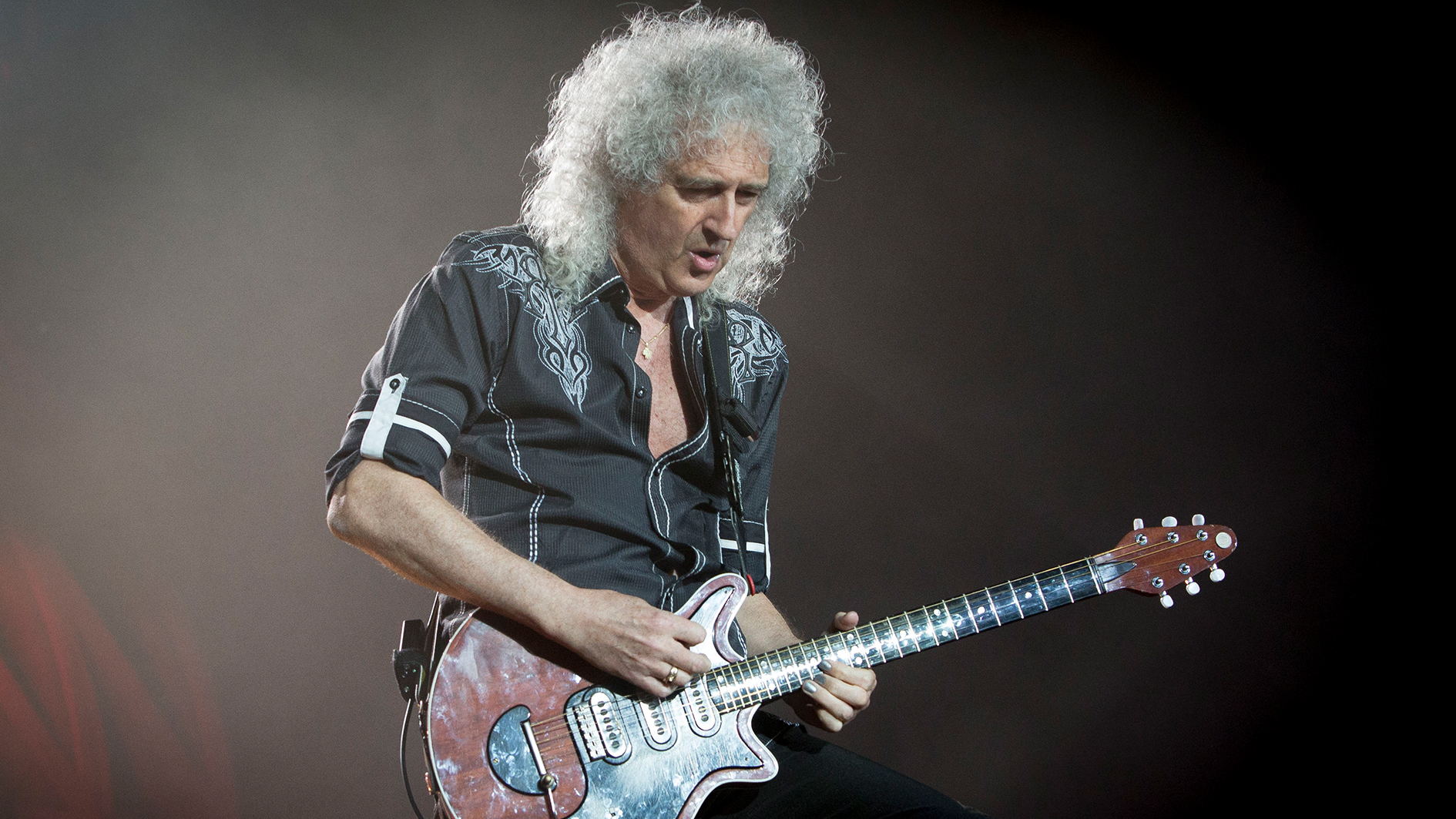
The good news for the many thousands of you out there who would like a rock-operatic electric guitar sound like Queen’s Brian May is that you can set down your power tools, put away the sledgehammer and step away from the fireplace.
Sure, Dr. May and his father, Harold, recovered tonewoods from wherever they could find them - the mantelpiece? Why not, Brian! - to make the famous Red Special and arm the Queen guitarist with the most distinctive and unique signature guitar for the most distinctive and unique rock tone.
But now the Red Special is available for mass-production via Brian May Guitars, you can pick up a good Vox combo anywhere, and the Golden Age of Pedals has something for all occasions, there’s no need to destroy the home. There is even an all-encompassing tech solution for May fans because, well, because it’s 2020.
Red Special

When you look through the archives you often see Brian May with something a little different. He has played Strats, Telecasters (particularly for Crazy Little Thing Called Love), a 1966 Baldwin Hank Marvin signature model by Burns complete with Rez-o-matik pickups and, err, a Washburn RR V. Hey, it was the ‘80s, and that song was for Highlander. But with Brian May there is only one place to start, the Kurgan if you will...
With its arcane switching, its salvaged tonewoods and its DIY build, Brian May’s Red Special has an origin story to rival Excalibur and is the quintessential rock totem. Necessity, as ever, was the mother of invention. In 1963 Brian May did not have the money to get a serious guitar. He had to make one. Why not make one better than any coming out of the Gibson or Fender factories?
The Red Special as it became known, would be a bits-and-pieces guitar. That it is still in operation, still his number one having never been refretted, is remarkable, testament to the May father-and-son luthier team’s vision.
The neck is worm-eaten mahogany from a 100-year-old fireplace, and it has a 7.25” radius oak fingerboard that was treated and treated again with Rustins coating. The body is semi-hollow blockboard with solid oak centre inserts and mahogany veneer on top and bottom. There are three Burns Tri-Sonic single coils, each with an on/off switch, switches for putting the pickups in and out of phase.
All the latest guitar news, interviews, lessons, reviews, deals and more, direct to your inbox!
These pickups have had the polarity reversed over years to give May some humbucking options. The Red Special has a vibrato that puts motorcycle springs to good use, with roller saddles in the aluminum bridge to reduce friction, and there is zero fret. May now uses a set of locking Schaller tuners but otherwise, this is as it was, a moment of guitar genius, and it would not be May’s last.
No expense spared
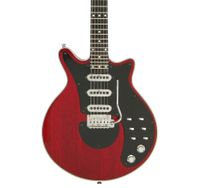
Brian May Guitars Brian May Signature in Antique Cherry - $849.99
There have been a few production line versions of the Red Special but this from Brian May Guitars (BMG) is really on the money, and, in the spirit of the original, is really good for the money. Offering plenty of change from a grand, you’ll get a chambered mahogany body, Tri-Sonic pickups sealed in Araldite adhesive to nix microphonic feedback and controlled by Brian May’s signature switching system, volume and tone controls.
With a 9.5” fretboard radius, it should have a little bit more of a modern feel than the original but this has to be the first step to nailing May’s tone and giving your BoRhap solo that extra oomph. A set of locking Grover tuners and a signature custom vibrato complete the look.
Fenders
Wait, what about cheaper alternatives to the BMG Brian May? We’ve got a technical solution for that, in due course. After all, the Red Special is one of a kind, finding a chambered mahogany electric for cheaper, with three single coils, a vibrato and out-of-phase switching? That’s a bridge too far.
Maybe we’d say a Squier Classic Vibe 60s Telecaster Thinline could some sort of a job; it has a nato (eastern mahogany) semi-hollow body and single coils, but is totally different in its voice, and only has two pickups. But no. Let’s look at what else May has used during his career, the acoustics and the other electrics that have come off the bench as a pinch-hitter in the studio.
Famously, May used Roger Taylor’s 1967 Fender Esquire on Crazy Little Thing Called Love, and tours with an off-the-shelf 1978 Fender Telecaster. Now, they still make the latter, and you can still pick up a Custom Shop Esquire if you already have the BMG Red Special tone covered and you’re a completist with money to burn.
No expense spared
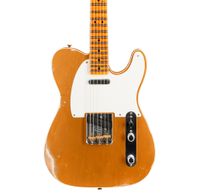
Fender Custom Shop Relic Double Esquire Special 2018 NAMM Ltd Edition - $4,000
OK, so it’s overkill, but c’mon, this is beautiful. Here you’ve got a two-piece bound ash body, a one-piece AAA flame maple neck with V-profile. It has a hand-wound Loaded Nocaster pickup in the bridge and an Open Loaded Nocaster in the neck, modded ’51 Nocaster wiring, bone nut, and an early ‘50s brass-saddled ashtray bridge.
On a budget
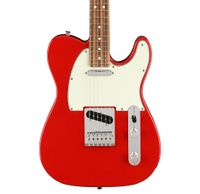
Fender Player Series Telecaster in Sonic Red - $674.99
You can’t really go wrong with Fender’s Player Series, especially its Telecasters. They’re Mexican-built, are voiced for vintage tone albeit with a more modern courtesy of a 9.5” fretboard radius.
This one is in Sonic Red, but you could get it in Polar White or 3-Color Sunburst. Here you’ve got a pair of Alnico V pickups that could cover a lot more ground one you are done with Crazy Little Thing Called Love.
12-Strings
May used a Burns Double Six 12-string on Long Away, from A Day At The Races. As May tells it, the Double Six inspired the song. As anyone who has picked up 12-string electric will testify, it tends to do that, inspiring new tones with its choral quality and harmonic overtones.
You might find a Double Six second hand on Reverb, this one would be ideal, though you’d want to swap out the Tri-sonics for Strat pickups as per May.
If you don’t want to do that, then here are several other viable 12-string options...
No expense spared
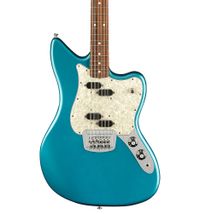
Fender Alternate Reality Electric XII - $999.99
Is this the real life? Is this just fantasy? Almost, it’s Fender’s Alternate Reality Series, which mines the Fender vaults for the great, the weird, the unusual and overlooked, such as this. The Electric XII insane. Think of the Byrds’ jangly psych tone.
Think what you could do with this through a Vox AC30. This is the sort of guitar that inspires new ideas, and new ideas for rock music has been May’s stock-in-trade since the 1970s.
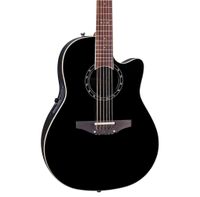
Ovation Standard Balladeer 12-string Acoustic-Electric - $799
Unlike the Pacemaker, this has a deep cutaway, all the better for reaching the high notes. Like the Pacemaker, it has exceptional build quality, with a AA spruce top on Ovation’s deep contour body profile and scalloped X bracing under the hood. It comes equipped with Ovation’s OCP-1K pickup and preamp
On a budget
Yamaha FG82012 12-String acoustic - $359.99
While the FG82012 has no onboard pickup system, it does have helps of that choral chime that you want from a 12-string. It has a solid spruce top, mahogany on the back and sides, with impeccable build and tone. Indeed, Yamaha’s FG series is one of our favorite acoustics.
Amps
For this section you can choose whatever amps you like, just so long as they are Vox*. Seeing Rory Gallagher running a Dallas Rangemaster through an AC30 combo gave May a tonal epiphany. Hitherto he had used a Burns transistor amp. The Vox with its full-blooded chime, its volume, its juicy crunch, that changed the game.
*Completists should point themselves towards reverb.com or similar in search of a replica Deacy Amp. Complete with chipboard baffle, it was built by John Deacon and used by May for the orchestral guitar parts in Killer Queen, Lily of the Valley, and so on.
No expense spared
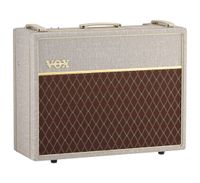
Vox AC30HW2X 30-watt 2x12" Hand-wired Tube Combo with Alnico Blue Speakers - $2,179.99
Loaded with a pair of May’s favored Celestion Alnico Blue speakers, with three ECC83/12AX7 preamp tubes, four EL84 power tubes, and a GZ34 rectifier tube this is the one. All tubes are matched Ruby Tubes. The amp is finished in fawn as per pre-1963 Vox style and has a birch-ply cabinet.
There’s an additional bright switch on the normal channel and a footswitchable top boost for more gain if needed. This is the loudest 30-watts you’ll find. The hand-wired turret board is where a lot of your money is going but crank it up and it’ll be worth it.
On a budget
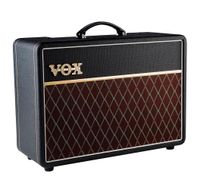
Vox AC10C1 10-watt 1x10" Tube Combo - $499.99
Scale down your operation and a measly 400-odd bucks will get you this smart combo. It has a Custom Celestion 10” speaker, the time-honored Vox top boost, and has two 12AX7 preamp tubes and two EL84 power tubes under the hood. And again, it’s loud, and has all the chime and crunch you need.
Effects
Well, if you want to ride your bicycle you are going to need pedals. Oh, sorry, we’re better than that. The good news is you don’t need a spare acre of stage space to accommodate a few gizmo’s that will help you get May’s tone. We’re thinking some tape echo, a good treble booster, a phaser, some chorus, and a wah.
Or, skip on to the end for the ultimate Brian May tone hack...
No expense spared
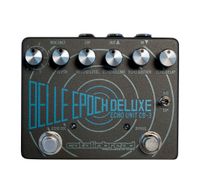
Catalinbread Belle Epoch Deluxe Tape Echo - $359.99
A DSP rendering of the Maestro Echoplex EP-3 tape delay, the Belle Epoch features that discrete preamp tonal sweetener and the ability to self-oscillate and send your signal barreling out into deep space. It has an echo range of 80ms to 800ms, so you can have slapback if you want, or go for those May-esque big swooshing echo. It’s hugely configurable and has no tape, so it’ll work all night, every night.
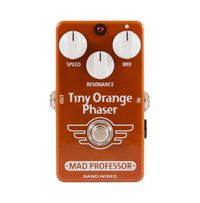
Mad Professor Tiny Orange Phaser - $195.95
What we really want is a vintage fOXX phaser, but this little orange box is not a bad substitute at all. Sure, the enclosure is the right color, but then MXR houses its flagship phaser in orange, too.
Let’s chalk that up to synesthesia and offer a commendation to Mad Professor, whose stompbox is a little more tweakable than old fOXX units, with controls for speed, resonance, mix and phase mode. You’ve got two modes, light, or fat and deep.
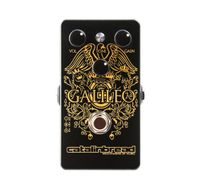
Catalinbread Galileo Distortion - $169.99
This feels like a bit of a cheat as it packs onboard preamp gain modeled after a Vox AC30 and partners it with a custom-tuned Rangemaster-style boost.
Look at the enclosure, look at the name; this is a Brian May pedal, and it’s a compact shortcut for those of us who may just be looking for a little taste of Queen crunch in the mix. Or it’s essential if you want to spare the neighbors the unattenuated power of a Vox AC30.
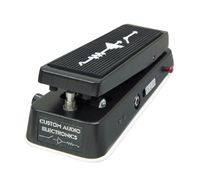
Dunlop MC404 Custom Audio Electronics wah - $169.99
Developed in tandem with Bob Bradshaw of Custom Audio Electronics, this is the wah to rule all wahs. It’ll certainly cover those tones used by May.
Onboard you’ve got dual Fasel inductors with two distinct voices, and an MXR MC-401 Boost/LineDriver for really cutting through. Internal adjustment pots let you tweak the output further.
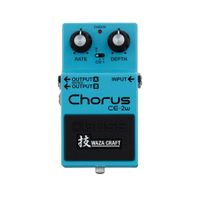
Boss CE-2W Waza Craft Chorus Pedal - $199.63
Combining the classic CE-1 and CE-2 chorus effects, with stereo output and all-analog circuitry, this is a top-shelf chorus that will serve you well.
On a budget
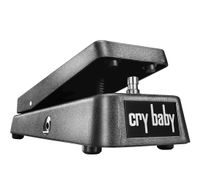
Dunlop GCB95 Cry Baby - $79.95
You can’t go wrong with the industry standard. Cheap, reliable, and available from pretty much anywhere.
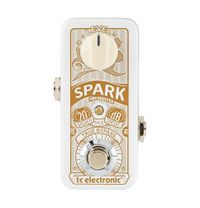
TC Electronics Spark Mini-Booster - $59
A quick budget option that adds 20dB of super-clean boost to your signal, so if you are running a Vox tube combo, cranking this will hit the front end hard and get you all its gain and volatile mid-range cooking.
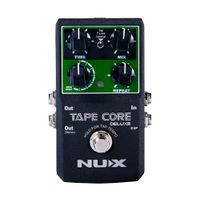
NUX Tape Core - $99
Dirt cheap with plenty options, the Tape Core replicates three reproduction heads for seven different combinations. Crank the repeat control for oscillating madness.
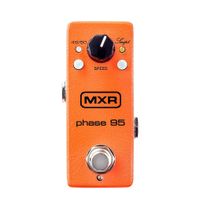
MXR M290 Mini Phase 95 - $99.99
Get the Phase 45 and Phase 90 circuits in a tiny footprint for a 100 bucks. You can also toggle between Script and Phase 95 modes. That’s control.
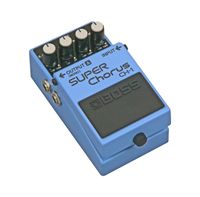
Boss CH-1 Super Chorus - $119.99
Like the Dunlop wah, the CH-1 is just ubiquitous and no less magic for it. At this price it represents excellent value. Industry standard.
The ultimate Brian May tone hack
IK Multimedia AmpliTube Brian May - $79.99
Don’t have room for all those pedals? Do you rightly fear the volume of a furious AC30? Well, IK Multimedia and Brian May teamed up this software package. It models two amps, three cabinets, and five stompboxes in one package for Mac/PC, AAX, AU and VST.
It’s just $79.99. The treble boosters, the custom fOXX-style cradle-operated phaser, the Deacy Amp(!), it’s all here. Oh, yeah, and it’s got the Red Special tone in a pedal form too. So say you can’t afford a BMG Brian May, or you like your guitar more, here is the solution.
And finally, you've got a bag of sixpences for picks, you might as well get the strings, too...
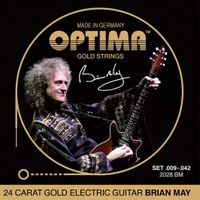
Optima Brian May Gold - $35
Hexagonal core, 24-carat gold plated and made in Germany, May's signature strings run .009 .011 .016 .024w .032 .042.
Jonathan Horsley has been writing about guitars since 2005, playing them since 1990, and regularly contributes to publications including Guitar World, MusicRadar and Total Guitar. He uses Jazz III nylon picks, 10s during the week, 9s at the weekend, and shamefully still struggles with rhythm figure one of Van Halen’s Panama.
